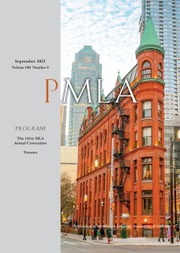No CrossRef data available.
Article contents
“Unruly Vernacular Riverfront”: Eileen Myles's Queer Persistence in the Changing Climate of New York
Published online by Cambridge University Press: 17 October 2024
Abstract
This essay reads the poet Eileen Myles's recent turn to climate activism as an extension of their queer critique of predatory urban change on Manhattan's Lower East Side, where they have lived since the 1970s. Myles's climate activism opposes the demolition of Manhattan's East River Park to facilitate one of New York City's first large-scale climate resiliency projects. Myles argues that residents’ desires should shape climate resiliency planning priorities. I read Myles's earlier poems and essays to describe how the queer persistence and the attention to the “now” of urban change that they develop in response to New York's housing crisis in the 1980s during the early era of AIDS inform their climate activism. I argue that the environmental humanities tools needed to represent climate change on an urbanizing planet are inextricable from a queer theory approach to sustaining desire and loss amid precarity, as becomes apparent through Myles's writing.
- Type
- Essay
- Information
- Copyright
- Copyright © 2024 The Author(s). Published by Cambridge University Press on behalf of Modern Language Association of America


